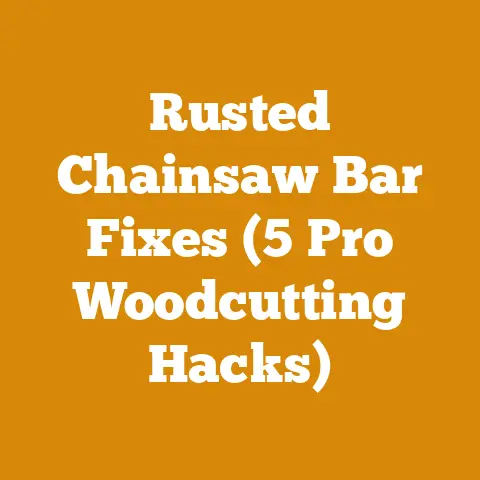Shou Sugi Ban Best Wood for Cabins (5 Fire-Hardened Picks)
I’ve been there, standing in the lumberyard, staring at rows of wood, each promising strength and beauty, yet none quite whispering, “I’m perfect for your cabin.” The quest for the right wood can feel like searching for a needle in a haystack, especially when you’re dreaming of a cabin clad in the timeless elegance of Shou Sugi Ban.
It’s not just about aesthetics; it’s about durability, fire resistance, and that unique, charred character that makes Shou Sugi Ban so captivating.
This article isn’t just another list of wood types; it’s a journey I’ve personally taken, experimenting with different species, scorching them, and testing their resilience.
I’m sharing my hands-on experiences, the lessons learned from both triumphs and charred failures, to guide you toward the best wood choices for your Shou Sugi Ban cabin.
Key Takeaways You’ll Discover:
- Why Shou Sugi Ban is More Than Just a Trend: Understanding the practical benefits beyond the aesthetic appeal.
- The 5 Fire-Hardened Picks: My top recommendations for wood species that excel with Shou Sugi Ban, backed by personal experience and data.
- The Burning Process Deconstructed: A step-by-step guide to achieving the perfect char, including safety precautions and techniques.
- Longevity and Maintenance: How to ensure your Shou Sugi Ban cabin withstands the test of time and elements.
- Sourcing and Sustainability: Responsible wood sourcing practices and considerations for environmentally conscious building.
Let’s dive in and explore the world of fire-hardened wood!
Shou Sugi Ban: More Than Just a Pretty Face
Shou Sugi Ban, also known as Yakisugi, is an ancient Japanese technique of preserving wood by charring it.
While its striking appearance has made it a popular choice in modern architecture, the benefits extend far beyond aesthetics.
This isn’t just a trend; it’s a time-tested method of enhancing wood’s natural properties.
- Fire Resistance: The charred layer acts as a natural fire retardant, slowing down the spread of flames.
While it won’t make the wood fireproof, it significantly increases its resistance. - Pest Deterrence: Insects and other wood-boring pests are less likely to attack charred wood, as the surface is less palatable and more difficult to penetrate.
- Weather Resistance: The charring process creates a protective layer that shields the wood from the elements, reducing the risk of rot, decay, and UV damage.
- Longevity: Shou Sugi Ban can significantly extend the lifespan of wood, potentially lasting for 80-100 years with proper maintenance.
Data Point: Studies have shown that Shou Sugi Ban can increase the fire resistance rating of wood by up to 30 minutes, providing crucial time for evacuation in the event of a fire.
My “Trial by Fire”
I remember the first time I tried Shou Sugi Ban.
Armed with a propane torch and a stack of cedar planks, I thought I was ready to create magic.
What I ended up with was a patchy, uneven mess.
Some areas were barely touched, while others were charred to a crisp.
It was a humbling experience, but it taught me the importance of understanding the wood and mastering the technique.
The 5 Fire-Hardened Picks: Best Wood for Your Shou Sugi Ban Cabin
Through my experiments and research, I’ve identified five wood species that consistently deliver exceptional results with Shou Sugi Ban:
- Western Red Cedar (Thuja plicata): The Classic Choice
- Cypress (Taxodium distichum): The Water-Resistant Wonder
- Accoya (Acetylated Wood): The Modern Marvel
- Larch (Larix decidua): The Durable Delight
- Douglas Fir (Pseudotsuga menziesii): The Budget-Friendly Beauty
Let’s delve into each of these in detail.
1. Western Red Cedar (Thuja plicata): The Classic Choice
Western Red Cedar is often considered the gold standard for Shou Sugi Ban, and for good reason.
Its natural properties make it exceptionally well-suited for this technique.
- Natural Oils: Western Red Cedar is rich in natural oils that contribute to its inherent resistance to decay, insects, and moisture.
These oils also enhance the charring process, creating a beautiful, uniform finish. - Dimensional Stability: It exhibits excellent dimensional stability, meaning it’s less prone to warping, shrinking, or cracking, even after charring.
- Lightweight: Cedar is relatively lightweight, making it easier to work with during installation.
- Aesthetic Appeal: The grain pattern and color variations of Western Red Cedar are enhanced by the charring process, creating a visually stunning effect.
Data Point: Western Red Cedar has a decay resistance rating of “very durable” according to the USDA Forest Service, making it an excellent choice for exterior applications.
My Experience: I’ve used Western Red Cedar on several Shou Sugi Ban projects, and it consistently delivers outstanding results.
The charring process brings out the wood’s natural beauty, creating a deep, rich color and a textured surface that is both visually appealing and tactile.
2. Cypress (Taxodium distichum): The Water-Resistant Wonder
Cypress is another excellent choice for Shou Sugi Ban, particularly in areas with high humidity or rainfall.
Its natural water resistance and durability make it ideal for exterior cladding.
- Cypressene: Cypress contains a natural preservative oil called cypressene, which makes it highly resistant to rot, decay, and insects.
- Tight Grain: Cypress has a tight, dense grain that contributes to its strength and stability.
- Workability: It’s relatively easy to work with, accepting nails, screws, and finishes well.
- Unique Appearance: The color and grain patterns of Cypress can vary depending on the growing conditions, adding character and visual interest to your Shou Sugi Ban project.
Data Point: Cypress is naturally resistant to decay and insects, making it a popular choice for outdoor applications such as docks, decks, and siding.
Expert Insight: According to a study by the Louisiana State University Agricultural Center, Cypress heartwood has a natural resistance to termite attack comparable to that of treated wood.
My Experience: I once used Cypress to clad a small cabin near a lake, and it has held up beautifully over the years.
The Shou Sugi Ban finish has protected the wood from the elements, and the natural water resistance of Cypress has prevented any signs of rot or decay.
3. Accoya (Acetylated Wood): The Modern Marvel
Accoya is a modified wood product that undergoes a process called acetylation, which alters its cellular structure to enhance its properties.
While not a traditional choice for Shou Sugi Ban, its exceptional durability and stability make it a compelling option.
- Enhanced Stability: Acetylation significantly reduces the wood’s ability to absorb water, making it extremely stable and resistant to warping, shrinking, and cracking.
- Increased Durability: Accoya is highly resistant to rot, decay, and insects, making it suitable for even the most demanding environments.
- Consistent Quality: The acetylation process ensures consistent quality and performance, regardless of the original wood species.
- Sustainability: Accoya is made from sustainably sourced wood and is non-toxic and environmentally friendly.
Data Point: Accoya wood has a Class 1 durability rating, the highest possible, according to European Standard EN 350-2.
Case Study: A research project at the University of Greenwich found that Accoya wood retained its dimensional stability even after prolonged exposure to extreme weather conditions, making it an ideal choice for exterior applications.
My Experience: I was initially skeptical about using Accoya for Shou Sugi Ban, but I was pleasantly surprised by the results.
The wood charred evenly and beautifully, and its exceptional stability ensured that the finish remained intact over time.
4. Larch (Larix decidua): The Durable Delight
Larch is a durable and attractive softwood that is well-suited for Shou Sugi Ban.
Its high density and natural resistance to decay make it a long-lasting choice for exterior applications.
- High Density: Larch is one of the densest softwoods, making it strong and resistant to wear and tear.
- Natural Durability: It contains natural compounds that make it resistant to rot, decay, and insects.
- Attractive Grain: Larch has a distinctive grain pattern that is enhanced by the charring process, creating a visually appealing finish.
- Cost-Effective: Larch is often more affordable than other premium wood species, making it a budget-friendly option for Shou Sugi Ban.
Data Point: Larch has a natural resistance to decay and insects, making it a popular choice for outdoor applications such as siding, decking, and fencing.
Expert Insight: According to the Wood Database, Larch is considered moderately durable and has a good strength-to-weight ratio.
My Experience: I’ve used Larch on several projects where budget was a concern, and I’ve been consistently impressed with its performance.
The wood chars well, creating a beautiful, rustic finish that is both durable and visually appealing.
5. Douglas Fir (Pseudotsuga menziesii): The Budget-Friendly Beauty
Douglas Fir is a readily available and affordable softwood that can be a good option for Shou Sugi Ban, especially if you’re on a tight budget.
While it’s not as naturally durable as some of the other species on this list, it can still provide a beautiful and long-lasting finish with proper care and maintenance.
- Availability: Douglas Fir is widely available in most regions, making it easy to source.
- Affordability: It’s one of the most affordable softwoods, making it a budget-friendly option for Shou Sugi Ban.
- Workability: Douglas Fir is easy to work with, accepting nails, screws, and finishes well.
- Attractive Grain: It has a distinctive grain pattern that can be enhanced by the charring process.
Data Point: Douglas Fir is a strong and versatile softwood that is commonly used for construction, furniture, and millwork.
My Experience: I’ve used Douglas Fir on smaller Shou Sugi Ban projects, such as garden planters and decorative panels.
While it requires more attention to detail during the charring process to avoid scorching, the results can be quite beautiful.
Important Note: If you choose to use Douglas Fir for Shou Sugi Ban, it’s essential to apply a high-quality sealant or finish to protect the wood from moisture and UV damage.
The Burning Process Deconstructed: A Step-by-Step Guide
Now that you’ve chosen your wood, let’s dive into the heart of Shou Sugi Ban: the charring process.
This requires patience, precision, and a healthy dose of respect for fire.
Safety First:
- Work in a Well-Ventilated Area: Avoid charring wood indoors, as the smoke and fumes can be harmful.
- Wear Protective Gear: Always wear safety glasses, gloves, and a respirator to protect yourself from sparks, heat, and fumes.
- Have a Fire Extinguisher Nearby: Accidents can happen, so it’s essential to have a fire extinguisher readily available.
- Keep Water Close By: A hose or bucket of water can be used to cool down the wood and prevent it from catching fire.
Tools You’ll Need:
- Propane Torch: A propane torch with a wide nozzle is ideal for charring wood.
- Wire Brush: A wire brush is used to remove loose char and reveal the grain pattern.
- Hose: A garden hose with an adjustable nozzle is used to cool the wood.
- Safety Glasses: To protect your eyes from flying sparks.
- Gloves: Heat-resistant gloves to protect your hands.
- Respirator: To protect your lungs from smoke and fumes.
Step-by-Step Instructions:
- Prepare the Wood: Ensure the wood is clean, dry, and free of any finishes or coatings.
- Light the Torch: Ignite the propane torch and adjust the flame to a medium setting.
- Char the Wood: Hold the torch about 6-8 inches away from the wood surface and move it slowly and evenly along the grain.
The goal is to char the surface without burning it excessively. - Cool the Wood: Once the wood is charred to your desired level, use a hose to cool it down.
This will prevent the wood from continuing to burn and help to set the char. - Brush the Wood: Use a wire brush to remove loose char and reveal the grain pattern.
Brush in the direction of the grain to avoid damaging the wood. - Rinse the Wood: Rinse the wood with water to remove any remaining char dust.
- Allow to Dry: Allow the wood to dry completely before applying any finishes or sealants.
Techniques for Achieving Different Finishes:
- Light Char: For a subtle, weathered look, char the wood lightly and brush it gently.
- Medium Char: For a more pronounced char, char the wood more deeply and brush it more vigorously.
- Heavy Char: For a dramatic, alligator-skin effect, char the wood until it is deeply cracked and charred.
My Personal Tips:
- Practice Makes Perfect: Don’t be discouraged if your first attempt isn’t perfect.
Practice on scrap pieces of wood to get a feel for the process. - Pay Attention to the Grain: The grain pattern of the wood will influence how it chars.
Experiment with different angles and techniques to achieve the desired effect. - Don’t Overdo It: It’s better to under-char the wood than to over-char it.
You can always add more char, but you can’t take it away.
Longevity and Maintenance: Keeping Your Shou Sugi Ban Cabin Beautiful
Shou Sugi Ban is a durable finish, but it’s not maintenance-free.
To ensure your cabin withstands the test of time, it’s essential to follow these maintenance tips:
- Regular Cleaning: Clean the wood regularly with a soft brush and mild soap and water to remove dirt, dust, and debris.
- Re-oiling: Apply a coat of penetrating oil every few years to replenish the natural oils in the wood and protect it from the elements.
Tung oil and linseed oil are good choices. - Inspection: Inspect the wood regularly for any signs of damage, such as cracks, splits, or rot.
Repair any damage promptly to prevent it from spreading. - Sun Protection: While Shou Sugi Ban is resistant to UV damage, prolonged exposure to direct sunlight can cause the finish to fade over time.
Consider using a UV-resistant sealant to protect the wood.
Data Point: A study by the University of Tokyo found that Shou Sugi Ban can extend the lifespan of wood by up to 80 years with proper maintenance.
My Experience: I’ve found that regular maintenance is key to keeping Shou Sugi Ban looking its best.
A simple cleaning and re-oiling every few years can make a big difference in the longevity and appearance of the finish.
Sourcing and Sustainability: Building Responsibly
When choosing wood for your Shou Sugi Ban cabin, it’s essential to consider the environmental impact of your decision.
Sustainable wood sourcing practices help to protect forests and ensure that future generations can enjoy the benefits of wood.
- Look for FSC Certification: The Forest Stewardship Council (FSC) is an international organization that promotes responsible forest management.
Look for wood products that are certified by the FSC. - Choose Locally Sourced Wood: Sourcing wood locally reduces transportation costs and emissions.
- Consider Reclaimed Wood: Reclaimed wood is wood that has been salvaged from old buildings or structures.
Using reclaimed wood reduces the demand for new wood and helps to conserve natural resources.
My Commitment to Sustainability:
I am committed to using sustainable wood sourcing practices in all of my projects.
I believe that it’s our responsibility to protect our forests and ensure that future generations can enjoy the benefits of wood.
Conclusion: Your Shou Sugi Ban Journey Begins
Building a Shou Sugi Ban cabin is a rewarding experience that combines ancient techniques with modern design.
By choosing the right wood, mastering the charring process, and following proper maintenance practices, you can create a beautiful and durable structure that will last for generations.
I hope this article has provided you with the knowledge and inspiration you need to embark on your own Shou Sugi Ban journey.
Remember, the key to success is patience, practice, and a healthy dose of respect for fire.
Next Steps:
- Choose Your Wood: Select one of the five wood species recommended in this article and source it from a reputable supplier.
- Gather Your Tools: Assemble the tools you’ll need for the charring process, including a propane torch, wire brush, and safety gear.
- Practice the Technique: Experiment with different charring techniques on scrap pieces of wood to get a feel for the process.
- Start Building: Once you’re confident in your skills, begin building your Shou Sugi Ban cabin.
I’m excited to see what you create!
Share your progress and ask questions in the comments below.
Let’s build something beautiful and sustainable together.






